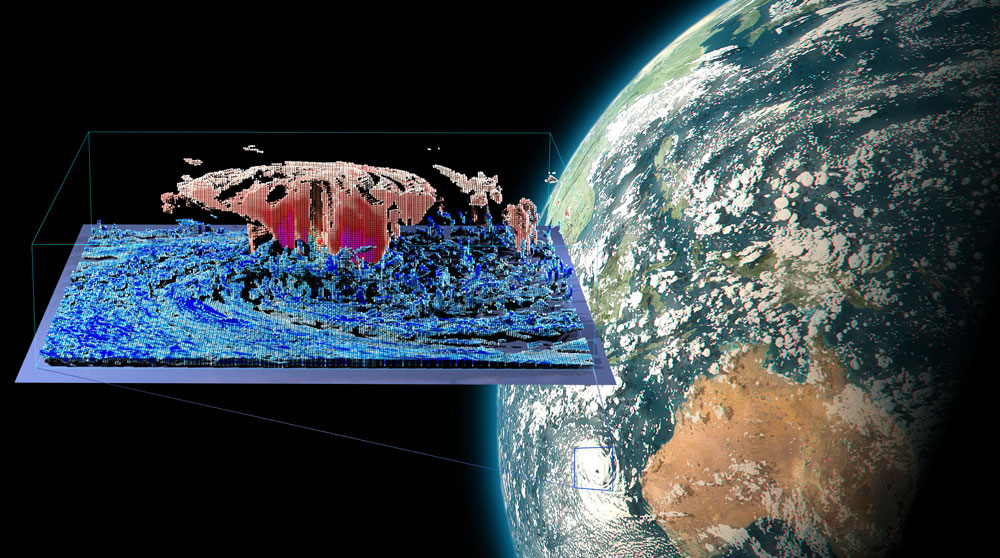
A team from Sandia and seven other DOE national laboratories is a finalist for the new Association for Computing Machinery Gordon Bell Prize for Climate Modeling for running an unprecedented high-resolution global atmosphere model on the world’s first exascale supercomputer.
The Gordon Bell submission, led by Energy Exascale Earth System Model, or E3SM, chief computational scientist and Sandia researcher Mark Taylor, details the team’s record-setting demonstration of the Simple Cloud Resolving E3SM Atmosphere Model, SCREAM, on Oak Ridge National Laboratory’s 1.2 exaFLOP — 1.2 quintillion computing operations per second — Frontier machine. Incorporating state-of-the-art parameterizations for fluid dynamics, microphysics, moist turbulence and radiation, SCREAM is a full-featured atmospheric general-circulation model developed for very fine-resolution simulations on exascale machines.
The Gordon Bell Prize for Climate Modeling “aims to recognize innovative parallel computing contributions toward solving the global climate crisis,” according to the Association for Computing Machinery. It will be awarded for the first time in November at the International Conference for High-Performance Computing, Networking, Storage and Analysis in Denver and accompanied by a $10,000 award provided by Gordon Bell. Winners will be selected based on their potential to impact climate modeling and related fields.
For more on E3SM, visit e3sm.org.